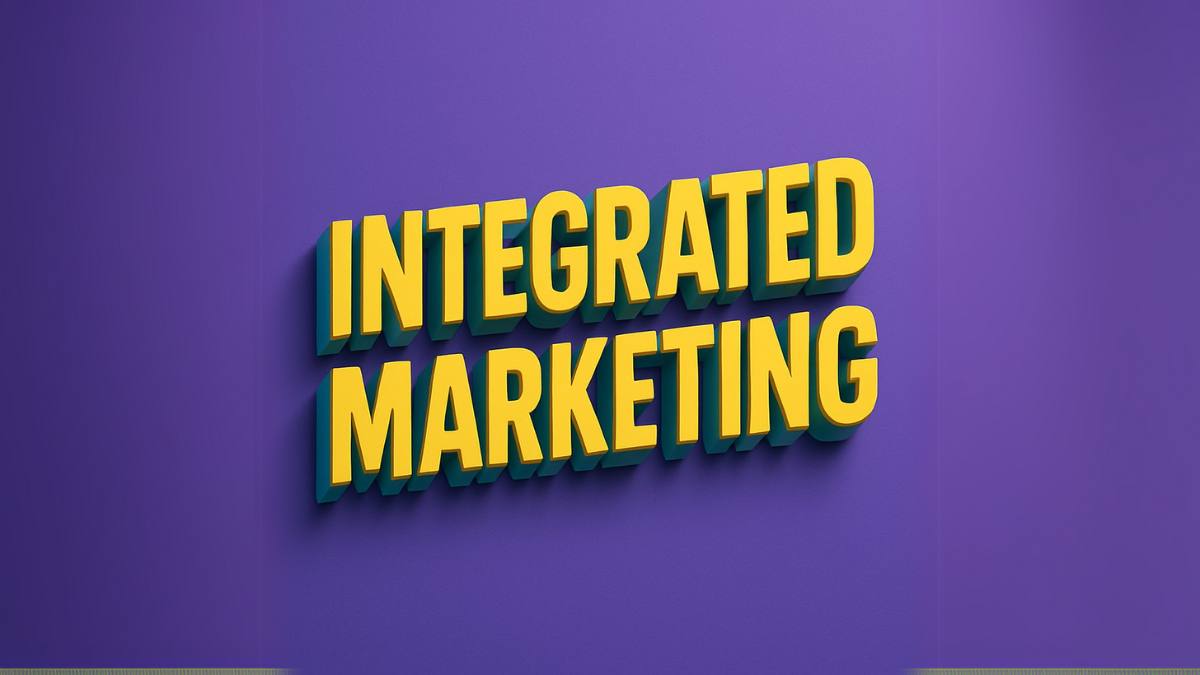If you’re running digital campaigns in 2025, there’s a good chance your audience sees your brand in more places than ever: Instagram, Google, YouTube, maybe even on a podcast ad while they walk their dog. But what happens when those touchpoints feel disjointed or inconsistent? That’s where integrated marketing steps in. It’s more than just a buzzword, it’s the glue that binds your brand across platforms, creating a seamless and consistent customer experience. In this guide, we’ll break down what is integrated marketing, why it’s crucial, and how to do it right.
Table of Contents
What is Integrated Marketing?
Let’s keep it simple: Integrated marketing is all about making your brand feel the same, no matter where people find you.
Whether someone watches a YouTube ad, gets an email from your newsletter, or scrolls past your TikTok, they should instantly recognize your voice, your message, your vibe. That’s integrated marketing. It’s not just posting the same thing everywhere. It’s about aligning your strategy, content, and branding so everything works together to tell a bigger story.
Why this matters in 2025
We’re in the age of fragmented attention. Customers bounce between platforms all day, TikTok on their lunch break, Google during a commute, and podcasts at the gym. If your message feels inconsistent across those platforms, you lose momentum.
2025 marketing isn’t about being everywhere. It’s about being everywhere in sync.
Welcome to the omnichannel world
People don’t think in terms of “channels.” They’re not wondering if they’re engaging with your brand through paid media or owned media. They’re just… experiencing you. Integrated marketing ensures that whether it’s a sponsored Instagram post, a chatbot interaction, or a Google search result, they’re meeting the same version of you.
Also Read: How to create an Omnichannel Marketing Strategy
How Integrated Marketing Works
So, how does this all come together?
At the core, it’s about consistency. Not repetition, consistency.
You’re telling the same story, but adapting the way you tell it depending on the platform. Think of it like translating your message into different dialects without changing the meaning.
For example:
- On Instagram, your message might come through in a visual carousel with short, bold captions.
- In email, that same message could turn into a story-driven write-up with a personal touch.
- On YouTube? Maybe a behind-the-scenes vlog or explainer video.
The key? All of these pieces are connected. You’re not just copying and pasting content, you’re weaving a larger narrative that makes sense no matter where someone enters.
Traditional vs Integrated
Old-school marketing often worked in isolation. The PR team did their thing. The social team had their own voice. Paid ads were…well, whatever the agency thought looked good.
Integrated marketing flips that. It removes silos. Everyone works from a shared playbook. Same goals, same voice, same experience.
And the impact? Stronger brand recall, better customer trust, and a lot less wasted effort.
Step-by-Step Guide to Building Your Integrated Marketing Plan
Alright, let’s get into the how. Because theory’s great, but execution is where this stuff really pays off.
1. Set your campaign objective
Before you open Canva or plan out a single post, ask: Why are we doing this? Are you launching something? Trying to re-engage an old audience? Driving traffic? Without a goal, everything else is just noise. So, define the win first.
2. Research and segment your audience
You can’t build a connected experience if you don’t know who you’re connecting with. Go deeper than basic demographics. What frustrates your audience? What motivates them? How do they consume content? Segment accordingly, not everyone needs the same message.
3. Define your core brand message & USP
What do you stand for? What makes you actually different? Get crystal clear here, because this message is your North Star. Everything else, from video scripts to email copy, should orbit around it.
4. Choose the right mix of marketing channels
Here’s the trap: trying to be everywhere. Instead, be intentional. Go where your audience is already hanging out. Some brands thrive on YouTube and email. Others win on TikTok and Discord. Pick your mix based on impact, not trend.
Also Read: Top Marketing Channels for 2025
5. Assign ownership & responsibilities
One of the biggest killers of integrated campaigns? Teams working in silos. Clarify who owns what. Make sure your design, content, media, and dev teams are all synced up early on, not scrambling after launch.
6. Create a messaging framework
You want consistency, but not copy-paste sameness. Build a framework: core messages, key talking points, and flexible language guidelines. This keeps things cohesive without making every caption sound like a robot wrote it.
7. Develop reusable & adaptable content assets
Templates. Modular designs. Evergreen content pillars. Reusability saves you from burnout and helps keep quality high when you’re stretching across platforms.
8. Launch, track KPIs, and optimize in real time
Don’t just hit “publish” and hope. Set clear KPIs tied to your goal, whether that’s conversions, engagement, traffic, or something else. Track religiously. Be ready to pivot fast if something flops (because honestly, something probably will).
Also Read: 20 Digital Marketing KPIs
Top Channels to Use in Integrated Marketing
Integrated marketing isn’t about spamming every platform, it’s about picking the right combo and getting them to work together like a band, not a solo act.
Let’s break it down.
Paid Media
This is your front-row seat to attention, if you’re willing to pay for it. Think:
- Search ads (Google, Bing)
- Social ads (Meta, TikTok, LinkedIn)
- Programmatic display (banner ads on media sites, YouTube pre-rolls, etc.)
Paid media gets you quick reach and a ton of data, but it only works if your brand message is dialed in. Otherwise, it’s just money down the drain.
Also Read: Instagram Ads Cost
Owned Media
This is your turf. You control the message, the look, and the flow. Examples include:
- Your website (ideally fast, mobile-friendly, and not a design nightmare)
- Email newsletters (still one of the highest-ROI channels, by the way)
- Your blog, app, or even community forum
Owned media builds long-term trust. It’s where people go when they’re really considering you.
Earned Media
Earned media is all the stuff you didn’t pay for, but earned by being good at what you do. This includes:
- PR mentions
- Customer reviews
- User-generated content
- People tweeting or posting about you (ideally in a good way)
It’s organic, it’s authentic, and when it works, it works really well. Just remember, you can’t fake this stuff.
Shared Media
This one’s often overlooked. Shared media is what happens when your brand collaborates or engages with others. It might be:
- Influencer campaigns
- Brand partnerships
- Affiliate collaborations
- Conversations in community spaces like Reddit or Discord
Shared media extends your reach in a way that feels more trustworthy because it comes from someone else your audience already believes in.
Also Read: Types Of Performance Marketing Channels
Real-World Examples of Integrated Marketing Campaigns
Sometimes the best way to understand integrated marketing is to see it in the wild. These brands didn’t just “advertise”, they told cohesive stories across platforms, and the results speak for themselves.
GoPro: Be a Hero
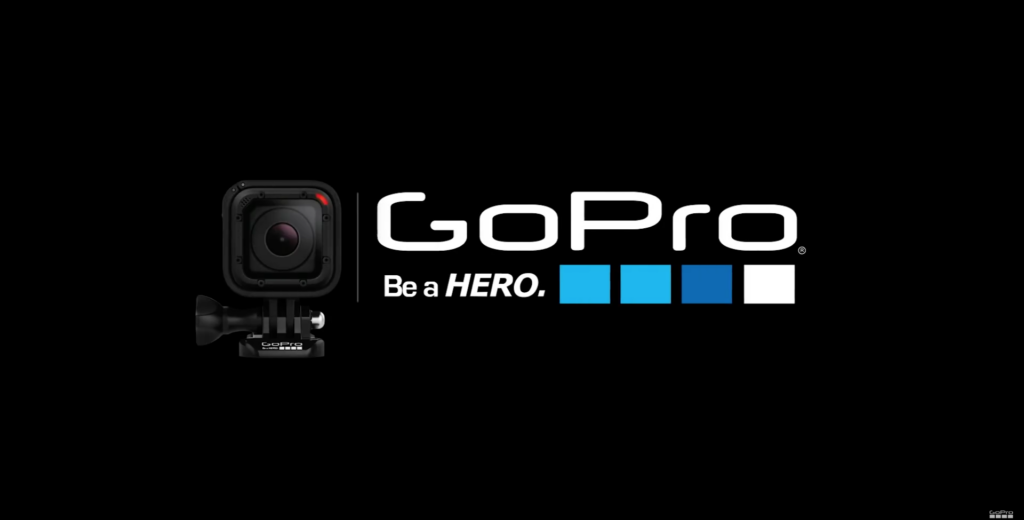
GoPro did something smart. Instead of just pushing out ads, they let their users become the storytellers. People took their cameras skiing, surfing, skydiving, then shared the footage. GoPro leaned into it, repurposing that content for ads, web, social, even retail displays.
The result? Whether you saw a YouTube compilation, an Instagram reel, or walked past a GoPro booth at Best Buy, you got the same message: This is a camera for heroes. For you. It was authentic, consistent, and pulled people into the brand instead of shouting at them from the outside.
Dove: Real Beauty
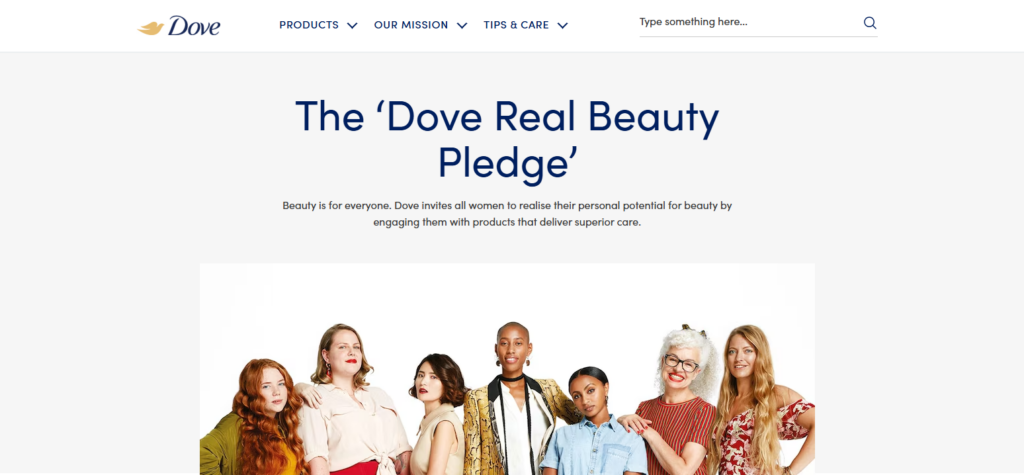
This one’s been running for years, but it still hits. Dove didn’t just launch a “Real Beauty” campaign, they built an entire platform around redefining beauty standards. What made it work?
TV spots showed real women, not models. Magazines carried the same message. Online videos dove deeper with longer stories and behind-the-scenes interviews. Social media picked up the conversation and ran with it. Even the packaging aligned.
It felt like one conversation across multiple touchpoints, not five different teams trying to say five different things.
Domino’s: AnyWare
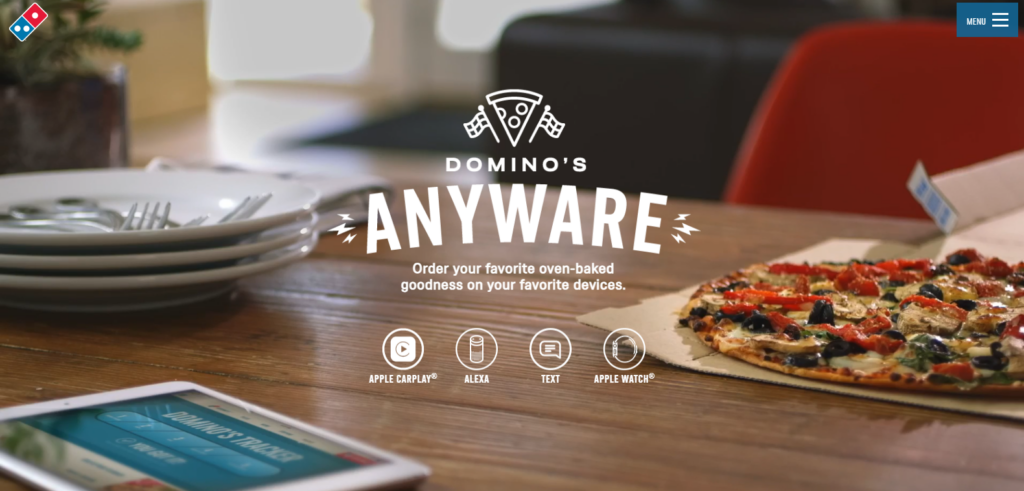
Domino’s took ordering pizza and made it ridiculously easy, across literally every device you can think of. Smartphone app? Check. Smartwatch? Yep. Smart TV, car dashboard, Twitter, voice assistants? All of it.
But here’s the thing: they didn’t just build the tech. They told a story around it: Pizza, anywhere, anytime. That idea carried across every channel, from quirky video ads to app UX design to radio commercials. It wasn’t just about functionality. It was integrated storytelling.
Old Spice: Smell Like a Man
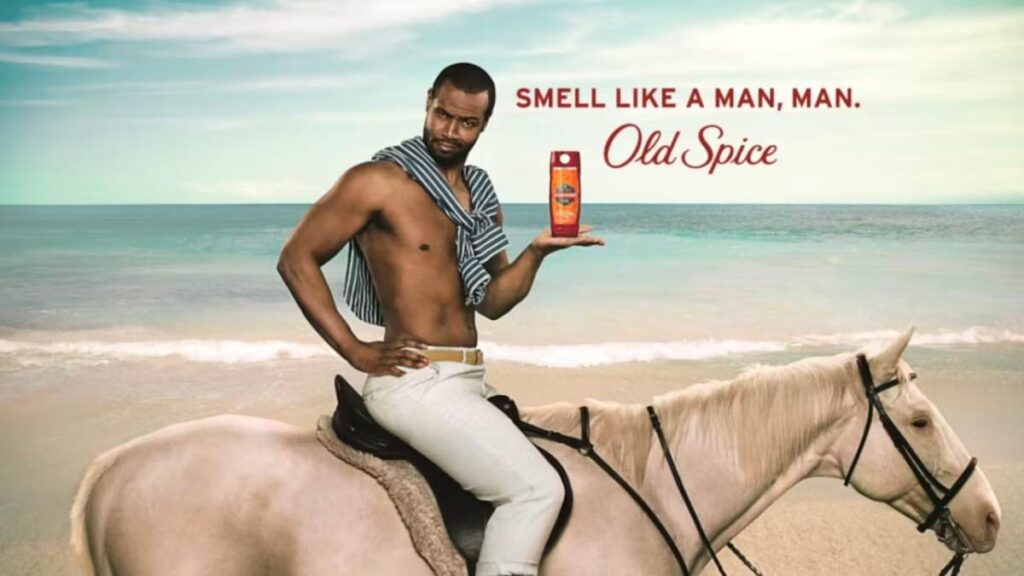
The Old Spice campaign that broke the internet. It started with that now-iconic “The Man Your Man Could Smell Like” ad. But it didn’t stop there. They went full tilt, with interactive YouTube videos, hilarious tweet replies, and even user-generated video responses.
What made it integrated? Every piece, from broadcast to comment replies, used the same voice, tone, and absurd humor. It felt like one living, breathing brand persona was talking to you everywhere.
And guess what? Sales skyrocketed. They completely rebranded for a younger, more digital-savvy audience. That’s the power of consistency with personality.
Geico: The Gecko

Geico has been running the gecko mascot for over two decades. Think about that. One character, one voice, across TV, radio, billboards, digital pre-rolls, meme-worthy social posts, and more.
What’s wild is how they’ve managed to keep it fresh without losing the core identity. Whether you’re catching one of the classic GEICO commercials on cable or scrolling past a cheeky gecko meme on Instagram, you instantly know who it is. That’s integrated branding done right, adaptable, memorable, and completely in sync across every platform.
Common Challenges in Integrated Marketing (and How to Overcome Them)
Look, integrated marketing sounds great in theory, but it’s messy in practice. Here are a few pain points almost every team hits (and how to deal with them).
Lack of alignment across departments
It’s a classic. Marketing says one thing, sales says another, and your social team is on a completely different planet.
Fix it: Centralized campaign planning. Literally get everyone in the same room (or Slack channel) early on. Set shared goals and agree on the messaging before anything gets built.
Message dilution across platforms
Ever see a brand with a bold Instagram voice, then a painfully boring website? That’s message dilution. It confuses people and erodes trust.
Fix it: Build a flexible brand messaging guide, not a script, but a playbook. Give teams room to adapt while sticking to the same core tone and positioning.
Difficulty tracking cross-channel ROI
When you’re running campaigns across six or seven platforms, figuring out what’s actually working can feel impossible.
Fix it: Use unified analytics tools (Google Analytics 4, HubSpot, Mixpanel, etc.) and set up tracking from day one. Create dashboards that tie efforts back to your campaign goals, not just vanity metrics.
Inconsistent customer data
Disjointed data = disjointed messaging. If your email system doesn’t talk to your CRM or ad platform, you’re not seeing the whole picture.
Fix it: Invest in tools that integrate well. CDPs (Customer Data Platforms) like Segment or Klaviyo help stitch everything together. It’s not sexy work, but it pays off fast.
Scaling content without losing quality
Trying to produce content for five channels at once? It gets overwhelming – and fast.
Fix it: Think modular. Create core assets that can be adapted into different formats. A blog post becomes a video script becomes carousel content. Bonus: Use automation tools judiciously to handle repetitive tasks without sacrificing the human touch.
Tools & Tech That Power Integrated Marketing
Let’s be real, trying to run an integrated campaign without the right tools is like juggling knives blindfolded. You need tech that helps you stay aligned, organized, and fast on your feet.
Here are the essentials:
CRM & CDP Tools
Think of these as your brand’s memory. CRMs like HubSpot or Salesforce keep track of every lead, deal, and customer conversation. CDPs like Segment take it further, pulling in data from multiple sources so you really get your audience.
Also Read: What Is Customer Relationship Marketing
Marketing Automation
Automate the boring stuff so your team can focus on strategy. Tools like Mailchimp, ActiveCampaign, or Klaviyo help with emails, triggers, and customer journeys that feel personal, even if they’re scaled.
Analytics Platforms
If you’re not tracking, you’re guessing. Google Analytics 4 gives you website data. Mixpanel helps you understand behavior. Use both to figure out what’s working (and what needs work).
Also Read: Use Product Analytics to Optimize Business Strategies
Collaboration Tools
This is where alignment happens. Tools like Notion (for docs and planning), Trello (for workflow), and Slack (for fast comms) keep teams in sync. Trust me, don’t run a multi-channel campaign in a cluttered inbox.
Conclusion: Why Integrated Marketing is Non-Negotiable in 2025
Let’s wrap it up.
In 2025, people don’t interact with brands in straight lines. They hop between channels, scrolls, stories, and conversations. If your brand feels disconnected along the way, you’re going to lose them.
Integrated marketing fixes that.
- It keeps your brand voice consistent.
- It connects your channels into one unified experience.
- It builds trust and boosts ROI because people get who you are, faster.
Bottom line: Plan smart, stay consistent, and measure what matters. That’s how modern brands win.
FAQs: Integrated Marketing
Q1. What’s the difference between integrated and omnichannel marketing?
Integrated marketing is about having a consistent brand message everywhere. Omnichannel focuses on creating a seamless customer experience across all touchpoints. One is about messaging, the other is about journey flow.
Q2. Can small businesses implement integrated marketing?
Yes, absolutely. You don’t need a huge budget, just a clear message and consistent content across your key channels. Even aligning your Instagram, email, and website can make a big difference.
Q3. What are the most effective channels for integrated marketing?
It depends on your audience. For some, it’s email, blog, and Google Ads. For others, it’s Instagram, YouTube, and influencer shoutouts. Choose based on where your people hang out, not just what’s trending.
Q4. How do I measure the success of an integrated campaign?
Start with clear KPIs: engagement, conversions, customer retention, etc. Then use tools like GA4, HubSpot, or custom dashboards to track performance across all touchpoints. Look at the whole funnel, not just single posts.
Q5. Is integrated marketing suitable for B2B brands?
For sure. B2B buyers often need multiple touchpoints before they trust you. Integrated marketing helps keep your brand clear and consistent during that long decision-making journey.
Q6. What’s the cost of running an integrated marketing campaign?
Costs vary based on scope and tools. You could run one with a few hundred dollars using free tools and templates, or go full-scale with paid ads and automation. Strategy matters more than budget.

